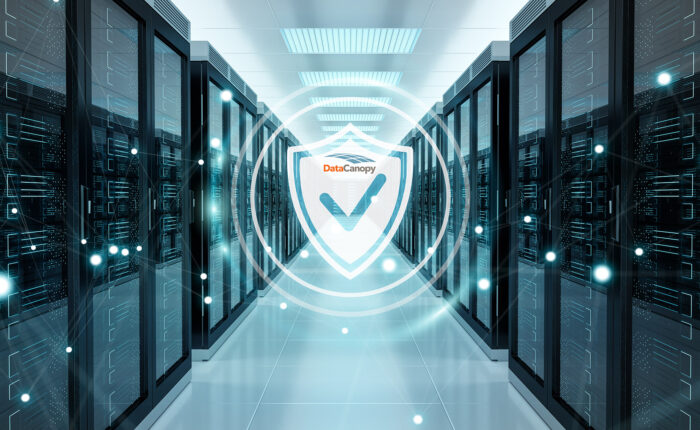Now more than ever, organizations need sound plans for business continuity and disaster recovery to ensure they can weather any crisis or emergency that may come it s way. Business continuity and disaster recovery plans, which are both strongly related, will ensure your organization will remain operational after an adverse event.
s way. Business continuity and disaster recovery plans, which are both strongly related, will ensure your organization will remain operational after an adverse event.
With organizations facing many challenges from external and internal factors, such as natural disasters and world events, or personnel and leadership issues, all organizations need to cultivate resilience and the ability to keep moving forward.
What follows are three critical considerations that will help you to protect your organization now and in the future.
1. Leverage existing business continuity and disaster recovery resources
The goal of business continuity and disaster recovery plans is to limit risk and get an organization running as close to normal as possible after an unexpected interruption. These practices enable your organization to get back on its feet after problems occur, reduce the risk of data loss and possible reputational harm, and improve operations while decreasing the chance of emergencies having impact at all.
There are many resources currently available to you that will help your organization identify its business continuity and disaster recovery requirements in a logical and structured way so that you can be sure you aren’t missing any element of your business. Some of the resources we recommend include:
Each of these resources provides a great starting point for evaluating your current state and understanding what is required to protect your business in the event of disaster.
2. Assess Internal and External Risks
It’s important as you begin to develop your business continuity and disaster recovery plan that you weigh a wide variety of risks that may impact your organization and develop response and continuity plans that match the level of impact anticipated. Without a plan, you’ll be left scrambling when the unknown occurs, and your business will be vulnerable.
External Risks
External risks often include natural or economic events that are outside of a company’s control. External events that lead to external risk cannot be controlled by a company or cannot be forecasted with a high level of reliability.
The types of external risks include economic and natural factors:
- Economic Risk: Economic risk includes changes in the marketplace. For example, an overall economic downturn could lead to a sudden, unexpected loss of revenue. Organizations can respond to economic risks by cutting costs or diversifying their client base so that revenue is not solely reliant on one segment or region.
- Natural Risk: The natural risk factors include natural disasters that affect normal business operations. A weather event, for example, may affect the ability of your organization to remain open for several days or weeks, leading to a sharp decline in overall sales for the month.
Internal Risks
When many of us think of disasters, we are often thinking of external forces that interrupt our business’s ability to operate. Depending on where you live earthquakes and hurricanes might even be top of mind. It’s important though when developing your business continuity and disaster recovery plans to consider both external and internal risks and develop a plan of action should either impact your business.
Internal risks are faced by a company from within its organization and arise during the normal operations of the company. These risks can be forecasted with some reliability, and therefore, a company has a good chance of reducing internal business risk.
The three types of internal risk factors are human factors, technological factors, and physical factors.
- Human-factor Risk: Personnel issues may pose operational challenges. Key members of the staff who become ill or injured and, as a result, are unable to work can decrease production. Additionally, your personnel can be affected by risks such as failure of suppliers and external producers of your product/services, lack of management and failure of payment from clients and vendors.
In such cases, the organization may need to address these risks and mitigate them with processes such as retraining of management, accounting and other mitigation methods to avoid these risks.
- Technological Risk: Technological risk include unforeseen changes to their IT infrastructure which can affect the manufacturing, delivery or distribution of your company’s product or service. For example, a technological risk that a business may face includes outdated operating systems, lack of colocation of data, unsure vector points in their server services, these risks can decrease production ability or disruptions in supplies or inventory. Another risk could include not investing in an IT staff to support the company Software issues can lead to equipment downtime can increase the risk of production shortfalls and financial costs due to less revenue and idle workers. Research and development is often a component of reducing internal risks because it involves keeping current with new technologies. By investing in long-term assets, such as leveraging cloud and colocation services, companies can reduce the risk of falling behind the competition and losing market share.
- Physical Risk: The physical risk to your organization can result in loss of or damage to the assets of your company. Whether your business is damaged by act of God or other external factors, it’s important that you or your organization have taken the proper steps such as insurance to ensure you are protected.
Conducting a business impact analysis of key systems and applications will help you to understand your vulnerabilities and where to focus your immediate efforts.
3. Focus on Mission Critical Operations and Applications First
With the risks in mind, now is the time to focus on your critical operations and applications. Assess what critical operations need to be up and running during any crisis and what applications and data they need to access to ensure your business is operational. The infrastructure supporting mission critical data will need to have the failovers and redundancy necessary to stay accessible during an emergency. Other areas of the business depending on your industry and your business’s specific requirements will also need to be available.
When determining the right infrastructure solution for your organization to implement as a part of your business continuity and disaster recovery efforts, we recommend considering:
- Hybrid, private, and multi-cloud solutions – Enable your employees to connect to mission critical applications and data from wherever they work.
- Colocation hosting – Ensure that a localized disruption doesn’t impact your physical infrastructure by hosting in a Tier III enhanced data center with 99.999% uptime guaranteed.
- Diverse connectivity options – Keep your data accessible and your organization agile – even during a crisis – with VPN services, custom carrier combinations, and connectivity to AWS Direct Connect and Microsoft Azure ExpressRoute
At Data Canopy, we stand ready to navigate your organization through the proper planning of your business continuity and disaster recovery plans for your IT infrastructure. If you are currently experiencing loss of productivity, Data Canopy is ready to assist. Contact our team of business continuity experts to put our network and talents to work to help restore your company.
Now more than ever, organizations need sound plans for business continuity and disaster recovery to ensure they can weather any crisis or emergency that may come its way. Business continuity and disaster recovery plans, which are both strongly related, will ensure your organization will remain operational after an adverse event.
With organizations facing many challenges from external and internal factors, such as natural disasters and world events, or personnel and leadership issues, all organizations need to cultivate resilience and the ability to keep moving forward.



